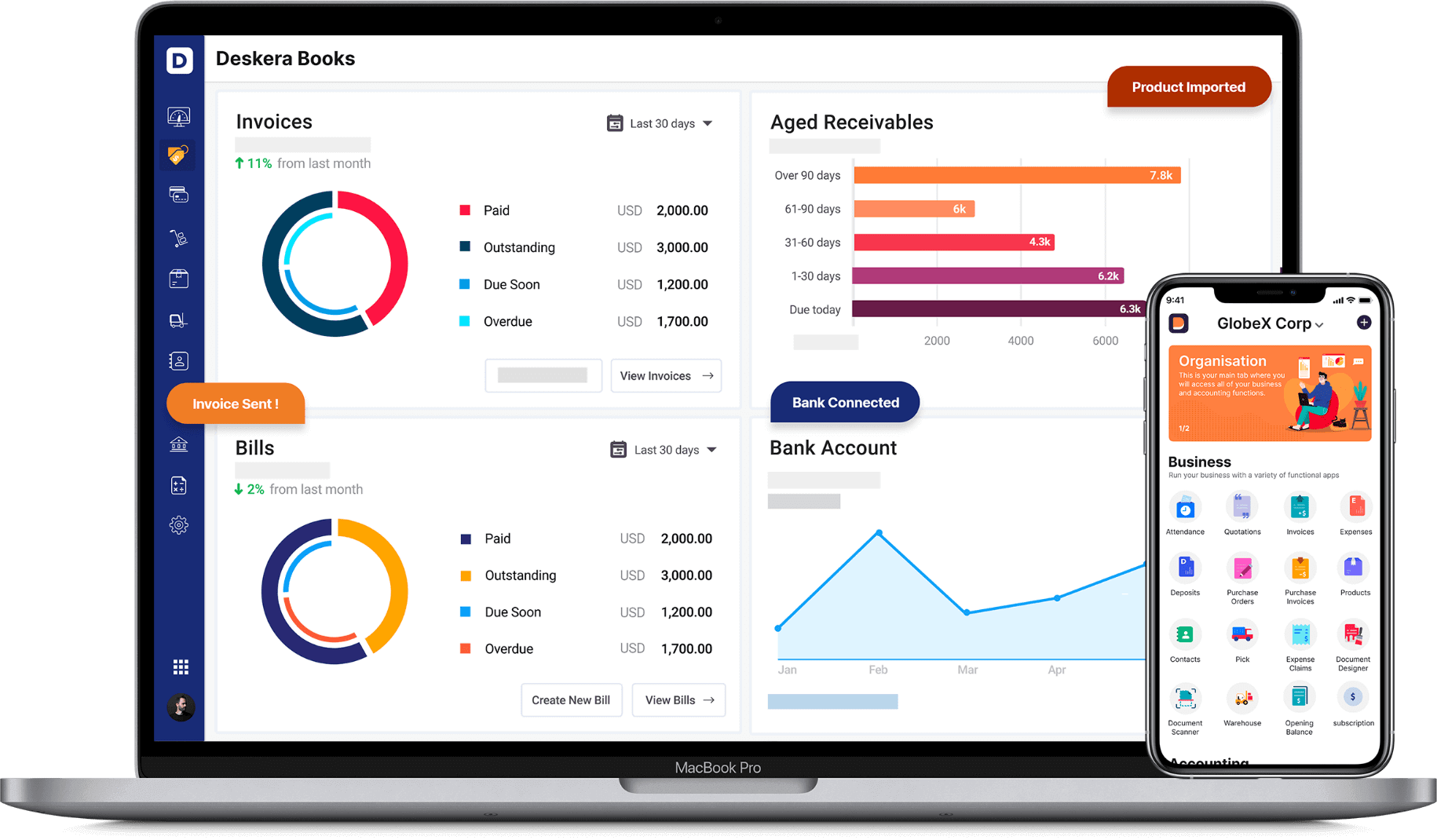Running a business is no joke. From buying products from wholesalers to generating revenue and market research, there are a myriad of procedures you need to follow. The way these aspects play a crucial role in running your business, the same way you can't undermine the importance of 'pricing.'
This seven-letter word may sound simple but the complexity of fixing a price on your commodities and products can be as tricky as a Sherlock Holmes plot line. Pricing is simply defined as the process of giving a price to a product or service you sell.
But various factors need to be considered before you finalize the selling price. This is where Competitive Pricing enters the game. So, what exactly is competitive pricing and how does it work? If these questions often make your head go round then today is the day you bid adieu to all these confusions.
What will you find in this article-
- What is Meant by Competitive Pricing?
- Why Do Businesses Prefer Competitive Pricing Model?
- Example of Competitive Pricing
- What is a Competitive Pricing Strategy?
- Types of Competitive Pricing Strategies
- Benefits of Competitive Pricing Strategies
- Is Competitive Pricing Strategy Right for SaaS?
- How Does Competitive Pricing work?
- Data Gathering and Quality Check
- Key Takeaways
- Related Articles
What is Meant by Competitive Pricing?
Working out a suitable price for your product can be challenging as a lot goes into consideration while making this decision. Multiple factors determine the perfect price of a commodity that makes it a hit in the market. At the same time, the business has to generate a fair revenue to make profits out of the sales of the product.
Businesses across the market use a common policy for determining the prices of their products. This policy or process is known as competitive pricing, which involves pricing your products as per the market trends and competitors' prices. The process involves analyzing the market rates for similar products before finalizing the cost of your product.
A major advantage of this policy is you get an idea of how that product is performing in the market at a particular price. Based on your analysis, you can decide if you wish to price the product more, less, or equal to the competitors' prices.
You get a fair idea of a suitable price that will attract more customers to your product or service. The price you decide will impact the other aspects of your business, so it's best to make an informed decision here.
Why Do Businesses Prefer Competitive Pricing Model?
When it comes to pricing the products of a business, there are ample number of approaches and techniques to choose from. But the ball often lies in the court of competitive pricing technique in a non-monopolised market.
The process of competitive pricing is often preferred over other pricing techniques because
- It offers a more nuanced and direct interpretation of the market trends.
- Save you energy and cost of analysing multiple factors to set the price.
- Gives you a channel of fair, clear, and thorough understanding of the competitor’s pricing.
This technique also doesn't fail because of the direct analysis involved. When making their final purchasing decision, internet customers consider price to be one of the most essential factors.
As per several surveys, more than 90% of the buyers, both online and offline, chose price as the primary factor in the decision of buying a product or not. Furthermore, an average online buyer will visit at least 3 websites before making their purchase, according to the e-commerce price statistics.
Numbers never lie, especially when talking about sales. Given these numbers, it is obvious that online customers place a high value on cost and price comparison. They are savvy bargain hunters, so if your pricing doesn't meet their expectations, they won't think twice about choosing one of your rivals.
This number and the observation from the survey has given us a solid result. Adopting a competitive pricing plan will help you maintain a steady customer base and allow your business to expand by always providing competitive costs, as seen from the perspective of online shoppers.
Example of Competitive Pricing
Complex situations are better understood when you have a live example. Here is an example to better explain the process of competitors' pricing. With the emergence of online e-commerce platforms, shopping options have increased.
Now you can buy the same product from a local store, online store, or superstore. All of these shopping spots will have different prices because of the level of exchange that was done, market shares, and perceived value of the product. For example, consider that the manufacturer's price of a cradle is $599. Now the buyers may find the same cradle at a lesser price.
There are chances that another seller will be selling the same product at a higher rate as well. A customer surveys the market because of this exact reason. Now, let's analyze the three possible situations here and how the pricing is affected.
-
Low Price
A renowned and profitable platform like Target would have the privilege of selling the same cradle at a lower price, say $565. Since the company has its stores in many locations, it can get the products at lower rates when purchased in bulk. Since large companies are more focused on generating revenue, they are less concerned about earning profit per item. This is why you often find products at a slightly lower rate from Target as compared to the local retailers.
-
Equal Price
A company may also decide to sell the same cradle at the manufacturer's cost. Now the major question arises, when other retailers and e-commerce businesses are selling the cradle at the same price, what differentiates you from them? This is where you will have to convince them by providing extra perks like an extended warranty period or super fast delivery. Since your customers will have several options, they would need a little more than the 'match price' to choose you over your competitors.
-
Higher Price
If you go to a nearby local store to buy the cradle, the prices will be higher. The reason is these local store owners offer real-time in-person services. From cradle to bike, they will adjust and customize the item specific to each and every customer. That is where most online sellers lag. Local sellers will charge you an additional amount for the extended services they offer.
Companies and store owners finalize their pricing based on the services, business size, and various other factors. Some may sell you a product at a lower price while the same product would cost higher elsewhere. It all depends on the kind of service you are expecting and how much the customer is willing to pay.
What is a Competitive Pricing Strategy?
A competitive Pricing Strategy is a process of strategically selecting or finalizing the price points for your products and services. The selection is done based on the competitor's prices so you can generate better revenue and have more chances of wooing your potential customers.
Small and new businesses do not often have proper and adequate data to study before finalizing their prices. But the competitor's data is already there in the market and studying it can provide a lot of useful information.
Competitive Pricing is more common among businesses that sell the same or highly same products in the same market for a long time. The prices of such products usually reach a state of equilibrium.
Types of Competitive Pricing Strategies
Companies need to derive effective strategies for enhanced results and guaranteed revenue. What should be the price of your commodity so customers choose you over your competitors? There is no straight answer to this question. This is why different strategies are developed for businesses to fix a specific price of their service or product.
As per the market standards, there are three types of Competitive Pricing strategies that are popularly adopted by many companies depending on their requirements and size. These include penetration pricing, promotional pricing, and captive pricing. Here you will find these strategies explained in detail for a better understanding.
Penetration Pricing
The term penetration itself gives a hint of what this pricing strategy does. By adopting the penetration pricing strategy, a business makes its way by penetrating the market.
- Have you ever wondered how a newly launched product or brand is trusted by the customers? Penetration pricing will help you solve this riddle.
- For instance, a beauty cosmetic company wants to launch acne reducing face wash. But the market is already loaded with lots of such products. So, why would a customer risk buying a newly launched face wash when they can get their hands on the most popular ones?
- As per the penetration pricing strategy, if you have a new product that is yet to mark its space in the market, you launch it at a slightly lower price as compared to your competitors. This enables your product to penetrate the market and form a customer base. Once your product is admired by the consumers, you can elevate the price as per the market trends.
- An apt example is the online music apps. A music streaming app may offer the first few hours for free but then ask you to subscribe after a defined time.
Promotional Pricing
Promotional pricing strategy is adopted when a company wants to elevate its sales. It involves temporarily reducing the price of a commodity to attract more customers.
- The strategy is often seen in promotional offers like buy 1 get 1 free or 25% extra. These offers attract more customers and even a consumer who regularly buys from your competitor may switch to your product because of the offer.
- Even though the promotional offer reduces the company’s sales on an individual unit. But when looking at it from a broader perspective, the overall sales rise because more buyers are now interested in that specific product.
- This pricing strategy works best when a company wants to increase the current customer base, and sales, and generate more revenue in a short span of time.
Captive Pricing
Captive Pricing Strategy makes the buying of an accessory product compulsory along with the core product. The most basic example of this strategy is buying razor blades with a razor or a charger with an iPhone. The strategy is often known as by-product pricing.
- Captive pricing involves two aspects: The core product and the Captive product.
- A core product is bought just once and does not need to be replaced in the near future. These products are very affordable and that is what attracts the customers. Companies set a low price for these core products so they can make a profit off the Captive products.
- Captive product is the one that is made mandatory to be bought with the core product. A Captive product often costs high because the company earns profit majorly from such products. For example, a printer and its ink are brought together. And ink here is the Captive product.
- The price of Captive and core products should be decided carefully because both these factors affect each other's value.
Benefits of Competitive Pricing Strategies
Competitive pricing strategies are widely adopted by companies as they assist in generating more revenue and also help to understand customer behavior. Apart from this, there are many other benefits of employing these pricing strategies for your products. Following are the benefits one needs to go through before adopting a competitive pricing strategy.
Higher Success Rates
A doubt will always follow while adopting a new policy. Confusion and second thoughts are pretty common. Interestingly, competitive pricing strategies have higher success rates. Experts believe that these pricing strategies work well in the market because of the involvement of psychological aspects.
- The results of competitive pricing strategies can usually be seen in a short amount of time. To assess long-term impact, employers need to be able to effectively understand comprehensive trends and their position in the industry. By increasing your knowledge of the industry and related competitors, you can make better business decisions and increase your chances of success in the business world in the long run.
- In some cases, some business owners may not be able to meet their goals due to misunderstandings and deployments of competitive pricing strategies. Therefore, you can optimize your competitive pricing strategy by adopting leading competitor monitoring tools to protect you from unfortunate consequences.
- Such tools not only provide global insights into competitors but also track the offerings and prices of competitors' products or services over time for continuous analysis. With such tools, you can monitor, control, and change prices accordingly.
Enhanced Profits
The chances of your product sale going up are quite high with a competitive pricing strategy. This does not mean that you always have to sell your product at a lower price than your competitors.
- Sometimes putting an equal price tag as the competitors also work well. All you have to do is carefully analyze the market trends and competitors’ pricing.
- Another useful factor here is if the product or service is price elastic. You should know that price changes have a significant impact on demand, as consumers are more price-sensitive. This knowledge can give better insight into whether to raise or lower prices in order to remain competitive in price competition.
- This strategy is widely adopted by businesses to achieve better profit margins and higher success rates.
Reduced Chances of Market Share Loss
An analysis of pricing trends in the market can reduce your chances of losing shares in the market. You can monitor and respond to pricing adjustments your competitors make instantly with the help of competitive pricing methods, particularly those that use pricing software to record competition data in real-time.
- This not only enables you to anticipate and take into account the prices of competitors in a dynamic manner, but it also enables you to keep track of the business's margin levels, which not only helps you to make longer-term decisions that are more strategically sound but also ensures balanced market share.
- Customers will be less inclined to turn to your competitors and more likely to purchase your company's goods or services if you consistently ensure that your prices stay market-relevant.
Customer Retention
- Pricing is one of the key considerations for internet customers when making purchases. Online customers browse at least three websites before making a selection, according to the price statistics of e-commerce.
- This demonstrates unequivocally how crucial pricing and price comparisons are for internet customers. Therefore, by regulating and evaluating pricing, competitive pricing analysis aims to assist you in maintaining a steady consumer base and fostering business growth.
Is Competitive Pricing Strategy Right for SaaS?
SaaS products are not regular grocery products or machinery that may give similar benefits. SaaS products are made to run business in a swifter way. For the same, a lot of SaaS products are built with a target to only provide services for one kind of business. Other times the SaaS product can be offered with a customisation option for each business buying it.
This is why competitor-based pricing may not be the best pricing model for many SaaS enterprises. It can be used in conjunction with another pricing model, but it cannot be the only pricing metric employed. The major drawback is that your pricing strategy is reliant on that of your competitors. The value you provide for your customer is not equal to the price.
Your product offerings won't be represented fairly, and the value of your goods will decline as a result of the clamor. Your customer might prefer your competitor's product at a similar price if you are not viewed as having value as a product.
Additionally, you would not know why a specific combination of features is supplied in a package at a given price since you lack price intelligence. When used alone, competition-based pricing is a bad case of plagiarism and will only help you stay in the market for a brief period.
How Does Competitive Pricing work?
The best way of implementing a competitive pricing strategy is by hiring an expert. Even then you must know about the process of devising a pricing strategy, which includes its working mechanism as well.
Data Gathering and Quality Check
Gathering relevant data is the first step in implementing a competitive pricing strategy. Experts believe that fresh data gives the best results. So, the data should be collected at least 2-3 hours before repricing. Collecting the data once is not sufficient. You have to regularly pool information for guaranteed results.
Competitors Analysis
You can learn a great deal from your competitors. Analyzing the strategies adopted by them is often beneficial because it says a lot about what’s working in the market and what is straightaway rejected by the consumers.
Categorizing the competitors in this manner makes the process less tedious and you are able to collect variable data. The best way of studying your competitors is by classifying them into three categories: Primary, secondary, and tertiary.
Online Activity
Tracking your competitors’ online activity will assist you in knowing the price range they are targeting for their products. You can then decide the price for your products based on the pricing strategy you wish to adopt.
Challenges Faced with Competitive Pricing Strategy
Just like a coin has two sides, if strategies have pros, they will have cons too. Competitive pricing strategies are highly preferred by the owners of businesses. But it is equally important to consider its downsides before entirely relying on the strategy.
- The strategy can't be used for long-term purposes. It can sustain the demands only during the initial stages. Since market prices change rapidly, the strategy that is trending this week may hold no relevance a week later. Keep an edge and a backup strategy ready.
- It is often believed that copying someone's answers in exams may lead to you making the same mistake. Well, that's quite true when you are finalizing your prices based on the model followed by your competitors. This can leave room for you to commit the same mistakes as them.
- Since most companies will be adopting a similar strategy, offering almost equal prices, you will have to be more creative with other aspects to stand out. Or else your product might just be another addition to an already existing crowd.
How Can Deskera Assist You?
Deskera Books can help you automate your accounting and mitigate your business risks. Creating invoices becomes easier with Deskera, which automates a lot of other procedures, reducing your team's administrative workload.

Key Takeaways
Adopting a pricing strategy helps in determining the most adequate price for a commodity or service. It keeps you updated with the market trends that are always changing.
- There are three types of competitive pricing strategies: penetration, promotional, and captive.
- Penetration pricing allows you to sell a newly launched product at a lower rate till it makes a space in the market. These rates can be increased after a customer base is formed.
- Promotional pricing is a process where a company reduces the price of a commodity for a short period or introduces attractive offers to increase its sale.
- Captive pricing refers to a strategy where an additional accessory product is mandatorily sold with the main item. The price of the Captive item is higher while that of the core item is low.
- Experts make heavy use of competitors' data to finalize a price using the Competitive Pricing Strategy. A lot of data is required for doing this, which is why the competitor's online activity is carefully analyzed to understand their pricing model.
- Categorizing your competitors into primary, secondary, and tertiary categories will help in gathering data efficiently.
- Though the strategy has pros and cons, it is highly beneficial for short-term pricing requirements.
So, if you are confused about the pricing of your products, relax and give the Competitive Pricing Strategy a chance. It is popularly adopted in the market by many businesses.
Related Articles











